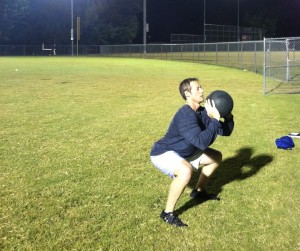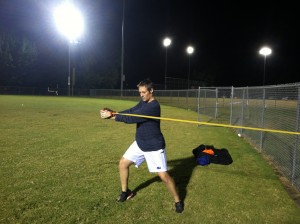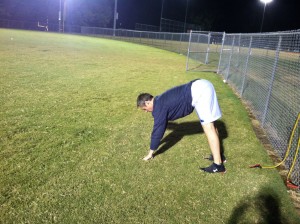By Roger A. Scott, MS, CSCS
In the world of athletic performance enhancement, aka strength and conditioning, for today’s baseball player, developing a solid base of core strength and power is extremely important to the success and longevity of any playing career. Whether it is helpful with batting, throwing, or running, your core region helps distribute forces to all of your extremities.
Your core muscles describe an area of the human anatomy that lie between the shoulder joint and hip joint areas. This includes your abdominal and oblique muscles, along with mid to low back area. There are a variety of resistance training exercises that assist in the development of this important muscle group.
A proper approach to training is one that emphasizes multiple muscle groups, multiple planes of movement, and often in an explosive manner. In a sports performance program, simulating the biomechanics found in all baseball movements is very important so that functional strength will transfer over properly. Here are three relevant exercises for the today’s developing baseball player:
 1. Medicine Ball Squat Tosses
1. Medicine Ball Squat Tosses
Take anywhere from a 4-pound to a 12-pound rubber bouncing weighted medicine ball and begin in a squatted position. Next, proceed to explosively jump straight up and release the ball directly overhead as high as possible, using maximal effort. Let the ball bounce, catch, and repeat the steps.
Work it: 2-3 sets for 10-20 repetitions (will utilize most major muscles and joints from head to toe)
 2. Cable or Tubing Explosive Rotations
2. Cable or Tubing Explosive Rotations
In an effort to simulate the rotational aspect found in swinging a bat or throwing a ball, take any kind of resistance cable or elastic tubing band. Make sure it is fixed about a solid, sturdy object, at shoulder or waist height. Take the handle or the end of the band and rotate from either left to right or right to left, in an explosive manner. Be sure to rotate the hips while doing this, as they are integral in both pitching and hitting mechanics. Be careful as to how much weight/resistance is used. Be sure that the abdominal and oblique muscles are emphasized, and not the arms and shoulders. Low to moderate resistance is best.
Work it: 2-3 sets for 20-30 repetitions

 3. Inchworms
3. Inchworms
This whole body drill can be used either as an exercise or part of the active warm up. Start with both hands and feet on the ground. Walk your hands forward until your back is in a straight line, like a bridge. Next, walk your feet up using only your toes and ankles, knees straight, toward your hands until you arrive in a full, or near full hamstring stretch. Repeat the sequence over a 15-20 yard area x 1-2 lengths. This focuses on actively stretching the ankle, knee, hip, and shoulder joints, along with the calves, hamstrings, and core area (upper/lower back/hip muscles).
BIO:
Aside from working with CJ and Kelli Stewart’s L. E. A. D. organization, Roger A. Scott has worked with Major League Baseball teams such as the New York Mets and Chicago White Sox, NCAA College Tennis, USTA Junior Tennis, ATF Agent (Bureau of Alcohol, Tobacco and Firearms), scholarship high school baseball players in greater Atlanta, and the 1996 United States Amateur Runner-up (Golf-PGA) to Tiger Woods, all as a strength and conditioning coach. Combined with experience as a Clinical Aide with Resurgens Orthopaedics Physical Therapy, Roger helps to provide a multi-dimensional element geared to help you compete, succeed, and stay on the field. His website is www.dynamicsportsystems.com.

Leave a Reply